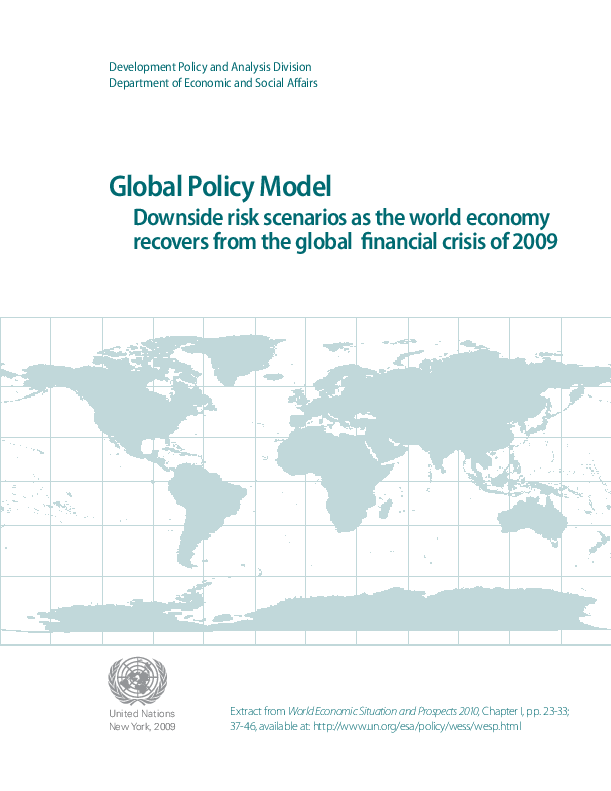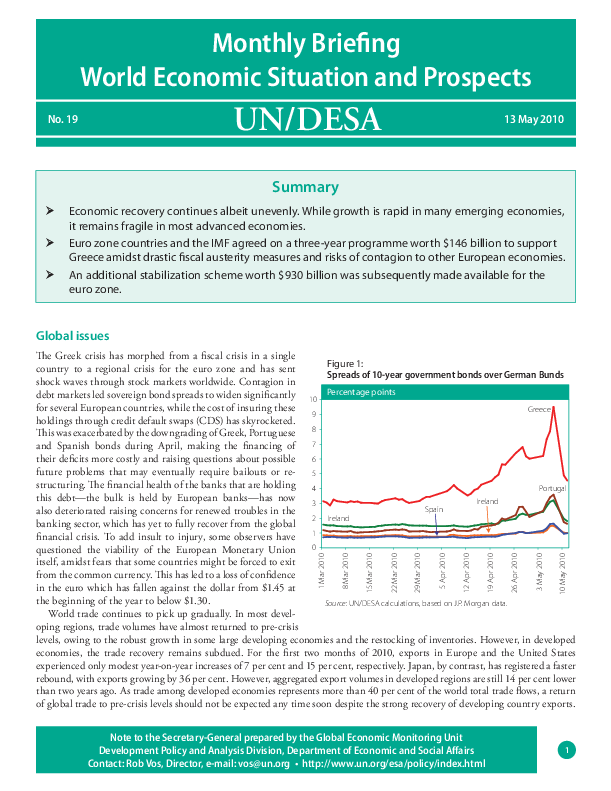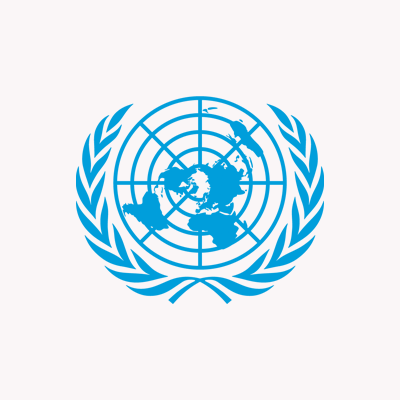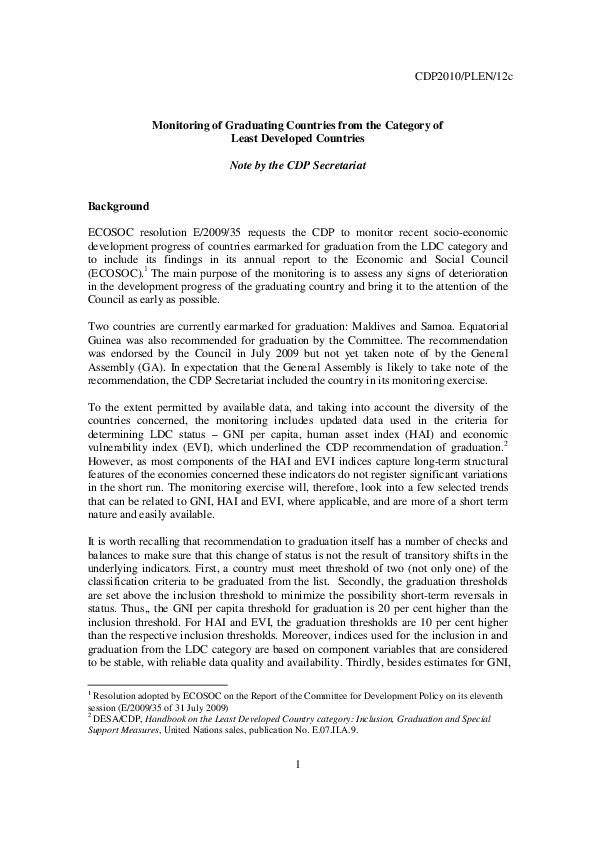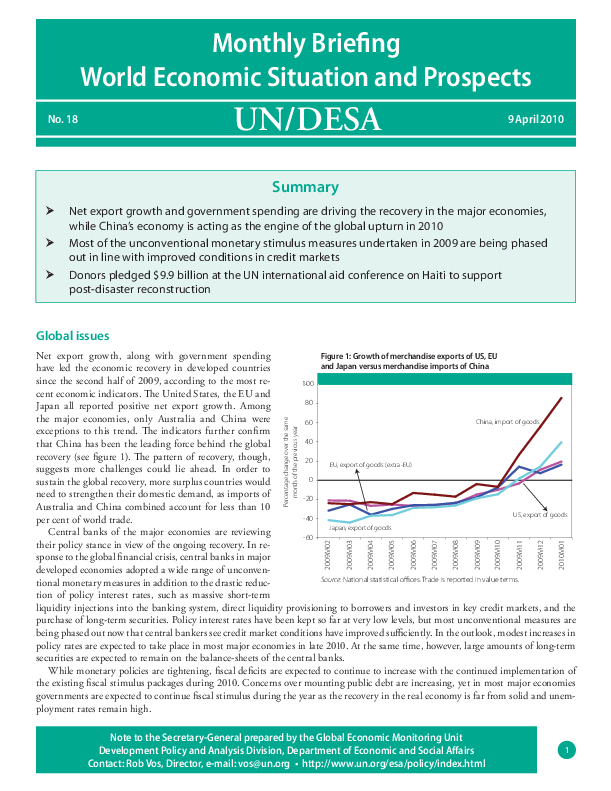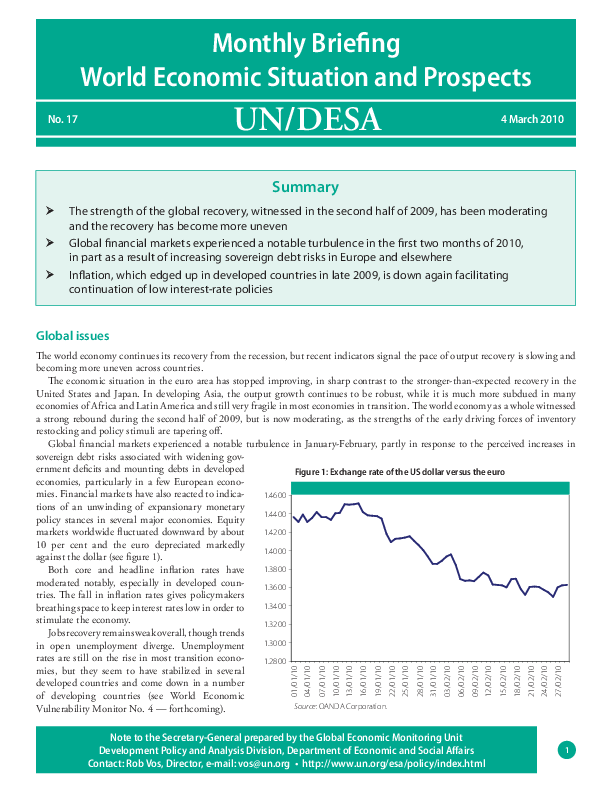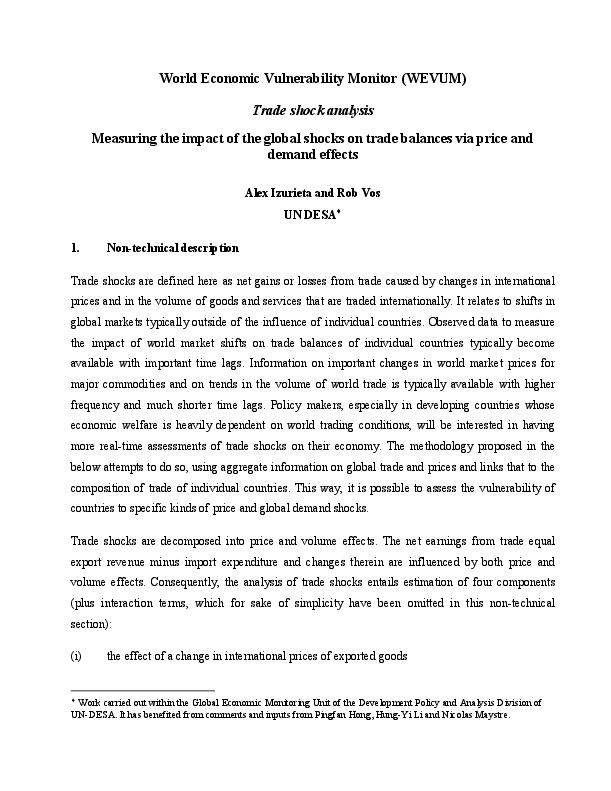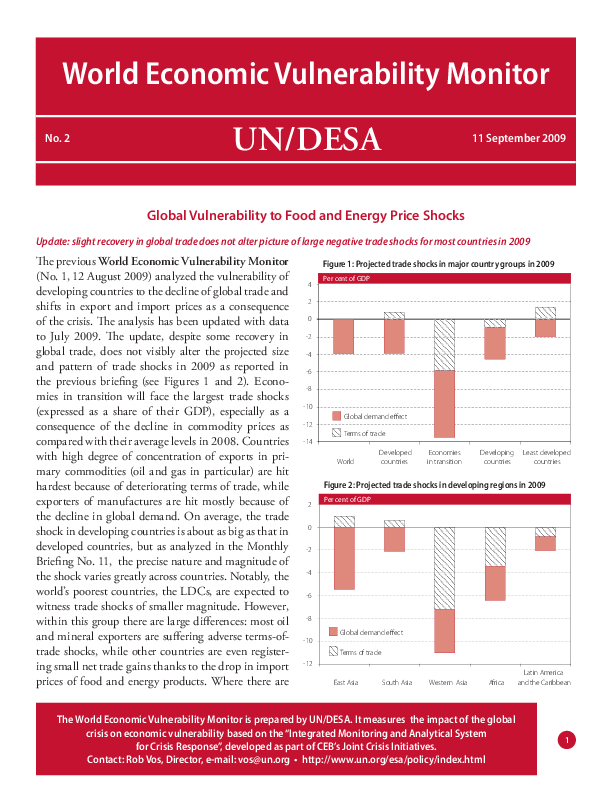Publications
Displaying 791 - 800 of 1105
The Global Policy Model (GPM) is a tool for investigation of policy scenarios for the world economy that has been developed for the Development Analysis and Policy Division of the United Nations Department of Economic and Social Affairs (DESA/DPAD). The model allows users to specify alternative assumptions about the future economic context and policy responses in different groups of countries and trace macro-economic outcomes over short, medium and long-term timescales. It is a model of the world economy design to simulate the macroeocnomic…
عربي, 中文, English,?Français, Русский, Español World Economic and Social Survey 2010: Retooling Global Development,?Overview (E/2010/50)
عربي, 中文, English,?Français, Русский, Español World economic situation and prospects as of mid-2010 (E/2010/73)
عربي, 中文, English,?Français, Русский, Español 2010 Reports to the Economic and Social Council
عربي, 中文, English, Français, Русский, Español CDP excerpts on the report by theme
Monitoring of countries graduating from the category of least developed countries ECOSOC resolution (E/RES/2010/9) on the Report of the Committee for Development Policy
English, Français, Español ECOSOC resolution (E/RES/2010/34) on on the Review of United Nations support for small island developing States
English, Français, Español GA resolution (A/RES/65/171) on the Fourth United Nations Conference on the Least Developed Countries
عربي, 中文, English, Français, Русский, Español GA resolution (A/RES/64/295) on the… 2010 CDP report, ECOSOC and GA resolutions
 Welcome to the United Nations
Welcome to the United Nations
